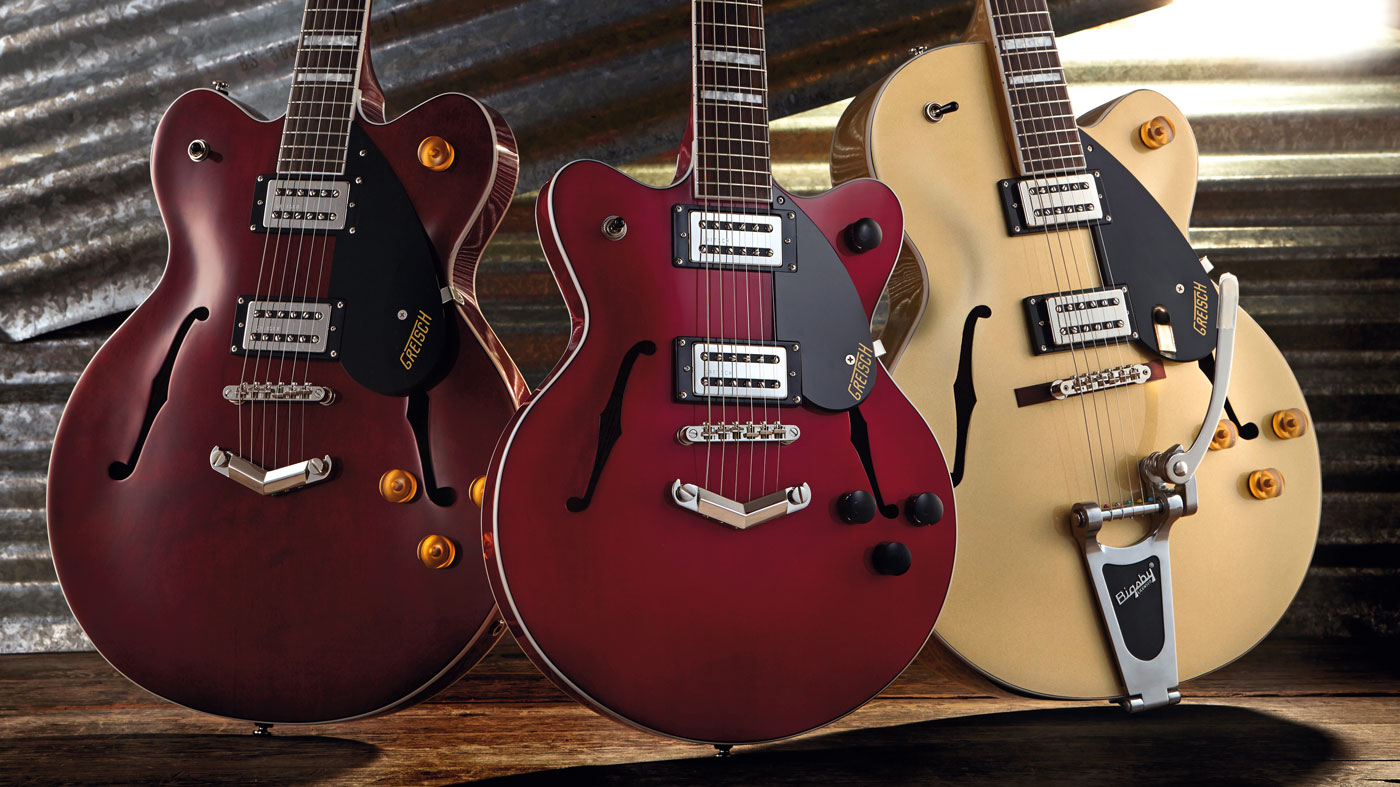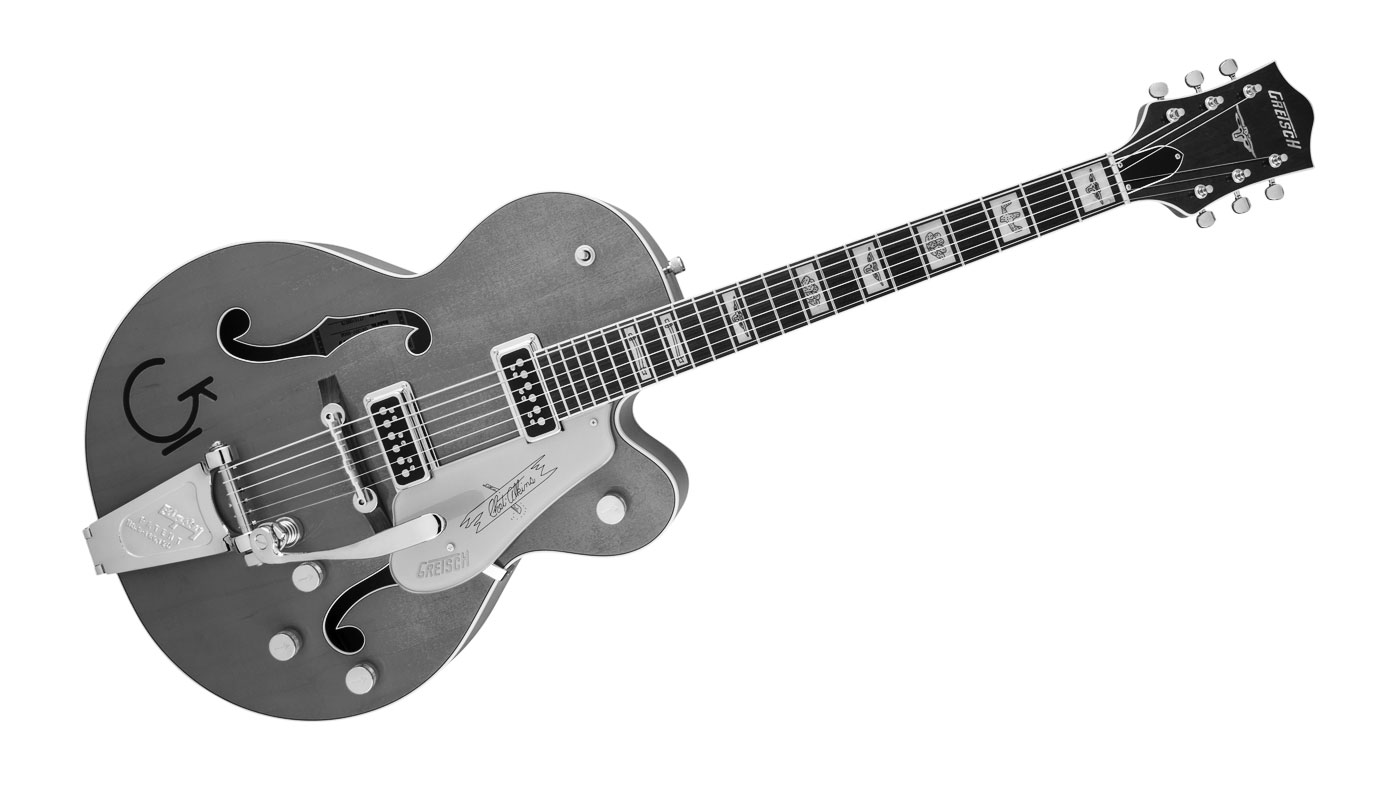How Gretsch made the ultra-affordable Streamliner guitar line
The backstory of the new budget hollowbodies

Introduction
Gretsch guitars have always been cool, but they’ve also soundtracked some of the greatest moments in music history.
Lest we forget it was Gretsch Country Gent that Beatle George Harrison played on the 9 February 1964 edition of the Ed Sullivan Show that changed the world; Malcolm Young’s Gretsch Jet Firebird that provided the rhythmic backbone to countless AC/DC tracks; and Stray Cat Brian Setzer wouldn’t be seen dead with anything less than a Gretsch G6120.
Two years in development, the new Streamliner guitars resurrect a model name from the 50s and 60s
While it was once true that Gretsch was an exclusive club open only to the well-heeled, the brand has produced some great affordable ranges, first the Electromatic Series and now the sub-£400 Streamliners.
Two years in development, the new Streamliner guitars resurrect a model name from the 50s and 60s to get Gretsch guitars into the hands of a new breed of guitarists. Adam Bowden-Smith, Project Manager of Gretsch at Fender Europe, gives us the back story to these affordable new models.
Where did you draw the Gretsch DNA from for the new Streamliners? There’s a real mix of influences here…
“The pickguards are from a Duo Jet, you get Baldwin-era f-holes, big block inlays and the headstock shape, but also the brand new appointments are all inspired by our rich Gretsch history, too. The G2622’s body shape echoes the classic Gretsch double-cutaways from the 1960s.
“The G2655, is a reduced sized version of that same shape. The single-cutaway G2420 draws influence from the big-bodied guitars launched in the 1950s, such as the G-6120, Anniversary and Tennessee Rose.”

The source of the Stream
The Streamliner name is relatively obscure compared to Country Gentleman, Duo Jet and the like...
“The original Streamliner was the precursor to the legendary Chet Atkins model 6120. It seemed fitting to revisit the name with these guitars, almost as if the line had a 60-year pause. Also, compared with a White Falcon or 6120, these new guitars are relatively stripped-down, or ‘streamlined’.”
Compared with a White Falcon or 6120, these new guitars are relatively stripped-down, or ‘streamlined’
Who do you see as the ideal customer for these new models?
“The price point dictates that they are perfect for those who are looking for their first hollow or semi-hollow guitar, but also for those who don’t want to take an expensive guitar to gigs or rehearsals, or need a quality backup guitar to complement their Professional or Electromatic Collection model.”
The new guitars have an interesting innovation - a hollowed-out centreblock. Traditionally, Gretsch guitars haven’t had centre-blocks at all, so why a hollow one here?
“Well, for one the two centre-block models are seriously light compared with other semi-hollow guitars. Also, with the big, hollowbody sound being such a big part of the Gretsch appeal, the chambering helps to retain some of tone, while still reducing feedback.”

All mod cons
How wary is Gretsch about straying too far from its successful formula?
“Our brand identity is everything to us! These are modern, versatile guitars for today’s players that can cover every style from jazz through to hard rock that are 100 per cent Gretsch both visually and tonally.”
Spec-wise, you loaded the new Streamliners with full-sized humbuckers as opposed to a classic DeArmond single coil or Filter’Tronstyle humbucking pickups...
The modding thing is pretty big in Electromatic world and I expect to see it here, too
“The Broad’Tron pickups were designed from the ground up specifically for these guitars. We created several prototypes at our Scottsdale HQ until we found what we were looking for - a versatile pickup with a sound that was desirable to seasoned players, yet could introduce “newbies” to the world of Gretsch.”
Do you see the Streamliners as guitars that consumers will be inspired to customise, something that has been very popular with the Electromatics?
“The modding thing is pretty big in Electromatic world and I expect to see it here, too. I hope folks listen to the stock pickups first though, ’cos we think they’re great as they are!”
Is the new V-shaped stop tailpiece influenced by the shape of the iconic Gretsch ‘Cadillac’ tailpiece?
“Good spot! Yes, the Cadillac tailpiece, and the V-cutout on the Gretsch-branded Bigsby vibratos are key influences to the design, resulting in something that is both classic and new at the same time.”

Geeks united
How would you describe the tone of these guitars compared with a classic Filter’Tron-equipped Gretsch?
“The Broad’Tron pickups have a high output that is ideal for current music styles, and of course the Center-Block models are great for higher-gains as they’re more resistant to feedback. A classic Filter’Tron will have more clarity and punch, with a tighter low end and clear highs, but then, that’s how they compare with any full-size humbucker!”
Gretsch guitars have been used on more iconic recordings than many people are aware of
Does Gretsch ever feel typecast by the rockabilly connection?
“While we are proud of that history, the list of celebrated Gretsch players outside the rockabilly field is much larger than those who are in it. Gretsch guitars have been used on more iconic recordings than many people are aware of. It’s almost like we’re the best kept secret of the guitar world.”
Why weren’t the Streamliners branded as part of the Electromatic range?
“Simply because they’re a brand new range of guitars. Think of the Streamliner, Electromatic and Professional Collections as the ‘Good - Better - Best’ of Gretsch. And then you have the Custom Shop, of course...”
So given that the Electromatic range has expanded quite a lot in the last few years, are there plans to expand the Streamliner range in similar fashion?
“Well, we’re all guitar geeks at Gretsch, and that means there are always plans!”

